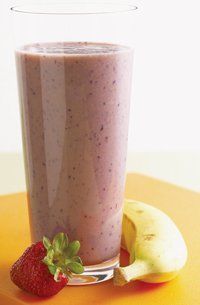GRAS Affirmation and the Development of Functional Foods

Despite the deteriorating worldwide economic outlook, one category of consumer products still shines as a gleaming bright spot for new product developers in the nutrition industry. The market for functional foods remains more bullish than ever-multi-billion-dollar global growth is anticipated over the next five years.
The demand for functional foods is driven by the modern consumer's desire for products that help build and maintain optimal health. While all food contains nutrients that maintain life and physiological function, functional foods-as they are viewed today-do more than simply provide basic nutrition. Functional foods contain special ingredients with unique beneficial effects on everything from cardiovascular health to mental function, immunity, and a growing list of contemporary health issues.
Functional food ingredients can be grouped into two major categories: 1) compounds naturally present in foods, usually at very low concentrations; and 2) novel ingredients, such as botanicals and extracts, typically not contained in conventional foods. Functional foods may contain either novel ingredients or they may be fortified with added compounds intrinsic to foods, usually at higher than naturally occurring levels.
In either case, before the product is introduced to the market for sale, the ingredient in question must have evidence of safety for its intended purpose, in the amounts that will be ingested through repeated consumption of the product. Increasingly, this hurdle is being cleared through a determination that the ingredient is generally regarded as safe (GRAS).
Historical Perspective
Processed foods contain hundreds of substances taken for granted as safe, based on their long-term use. No one questions, for example, whether or not table salt, dextrose, ascorbic acid, or vanilla extract are safe. On December 9, 1958, following passage of the Food Additives Amendment, FDA published the so-called "GRAS list," naming ingredients with safety that was previously established, either by historical use, their intrinsic nature, how they are used, or on the basis of information generally known and accepted by qualified scientific experts. This list is not all-inclusive-nor is it intended to be. It excludes numerous other food components and substances used in food processing that are generally recognized as safe and thus classified under the GRAS acronym. The amendment exempts GRAS substances from premarket approval by FDA as food additives.
FDA, under President Nixon's direction, began reviewing the safety of substances on the GRAS list. In 1972, FDA established a process for petitioning the agency to evaluate the GRAS status of substances not included in the ongoing review. FDA evaluated these petitions through a rule-making process. If the agency concluded that an item was GRAS, it published a detailed explanation in the Federal Register.
In 1997, FDA issued a proposed rule changing the GRAS petition/affirmation procedure to a voluntary notification process. The proposed rule is an amendment to 21 CFR Part 170, which contains the regulations for food additives. Under this rule, which has yet to be finalized, an individual or company may or may not choose to notify FDA that it has "self-affirmed" a particular substance as GRAS.
GRAS Self-Affirmation-How Is It Accomplished?
Because the GRAS notification process is voluntary, the party that self-affirms a substance as GRAS may decide whether to or when to notify FDA. Some companies choose to publicly announce a GRAS self-affirmation without prior notification to FDA. In either case, the same general principles apply in arriving at a GRAS determination. The ingredient must be safe and the information showing it to be safe must be available to scientific experts.
Exactly what is a "safe" food ingredient and how is its safety established, from a regulatory point of view? As codified in the proposed GRAS rule, safety is defined as "reasonable certainty that the substance is not harmful under the intended conditions of use" (21 CFR 170.30 (a)). Reasonable certainty is achieved on the basis of "common knowledge about the ingredient throughout the scientific community knowledgeable about the safety of substances added to foods" and "through scientific procedures," which encompasses "scientific data, information, methods, or principles, which ordinarily are published and may be corroborated by unpublished scientific data, information, or methods" (21 CFR 170.30 (b)).
FDA has thus broadened the scope of acceptable scientific information to include unpublished and proprietary safety data, which can be used to corroborate published evidence. Scientific information supporting the safety of a substance may include analytical, in vitro, animal, and human studies. To qualify as generally recognized information, the data should be published in a peer-reviewed scientific journal and be in circulation for at least six months prior to submission.
Notifying FDA
A GRAS notification makes a claim that a substance is exempt from the food additive approval process. Submission of a GRAS notice requires assemblage of a comprehensive product safety dossier in support of this claim. An exhaustive review should be conducted of the published scientific literature. History of use evidence should be cited. A complete description of the ingredient is provided that includes physical and chemical properties, identification of any impurities, characterization of the source material, and product specifications. Detailed information about the manufacturing process and laboratory methods used to analyze the ingredient, as well as adverse-event reports, should also be disclosed.
Novel substances with no prior appearance in foods or use in food processing may qualify for a GRAS determination. The safety data should be published in a peer-reviewed journal. Again, a minimum of six months should elapse between the publication date and submission of the notification to FDA.
In reviewing the notification, FDA will look for these essential elements:
- A statement that the substance qualifies for a GRAS exemption claim. Description of the substance.
- Conditions of use from lists of technical effects and food categories defined by regulation.
- The expected level of dietary exposure from use of the substance that takes the anticipated cumulative effect into account.
- The basis for a GRAS determination-a summary of the common knowledge and scientific procedures used to establish safety.
- A statement that the information supporting the GRAS determination is available for FDA review upon agency request.
In some cases, a novel ingredient may be chemically equivalent to a previously affirmed GRAS substance. FDA accepts the concept of substantial equivalence with regard to safety. A GRAS notification based on substantial equivalence should include the requisite information about processing, intended use, and expected intake by the target population, along with a detailed characterization of both ingredients.

According to FDA, GRAS determination requires significant scientific agreement that the ingredient is safe, which amounts to a lesser standard than consensus among scientists. Some substances may be supported by an abundance of published information that includes primary data, consisting of academic journal articles, as well as secondary data, which includes reviews, textbooks, and compendia such as the USP monographs and global pharmacopoeias.
More often than not, GRAS determination is achieved by convening a panel of experts who are qualified by training and experience to evaluate the safety of food ingredients and who conduct a review of the GRAS dossier. The expert panel includes food safety scientists and toxicologists with experience and expertise in the food industry and who are signatories to the dossier. The composition of the expert panel is often the make-or-break component of the GRAS notification that determines whether FDA will take issue with the GRAS determination.
GRAS and Dietary Supplements
Dietary supplements are defined, for regulatory purposes, as a category of foods. However, supplements are regulated differently than conventional foods under rules established by the Dietary Supplement Health and Education Act of 1994 (DSHEA). While the GRAS rubric overlaps to a certain extent with principles that apply to dietary supplement safety, a GRAS determination does not mean, ipso facto, that an ingredient is cleared for use in supplements.
Dietary supplement ingredients that have been present in the food supply prior to October 15, 1994, are presumed safe and thus "grandfathered." Ingredients introduced after that date are defined by DSHEA as new dietary ingredients (NDIs). Before an NDI may be legally sold in a supplement, FDA must be notified that the party introducing it has a basis to conclude that the ingredient "will be reasonably expected to be safe" (DSHEA; subsection 8.) This notification must be submitted no less than 75 days before sale of the ingredient. Safety data are submitted as part of the notification.
There are important differences between NDI and GRAS notifications. First, evidence for safety of an NDI need not meet the "generally recognized" standard; the data may be proprietary and unpublished, although peer-reviewed information understandably carries more weight with FDA. Second, the NDI notification must include the full text of all studies and reports, whereas only a summary of the information is submitted with the GRAS notification. The NDI notification is mandatory, unlike the GRAS notification to FDA, which is not voluntary. Most importantly, a GRAS affirmation does not fulfill the NDI notification requirement. A new dietary ingredient must comply with the rules of DSHEA, even if it is affirmed as GRAS.
Don't Attempt This on Your Own!
Given the complexities and potential pitfalls of the GRAS self-affirmation process, companies seeking to self-affirm an ingredient as GRAS normally turn to independent third-party organizations for guidance-and for very good reasons.
The advantages are multifold. To begin with, anyone undertaking the marketing of a new functional food ingredient must keep in mind that they alone are ultimately responsible for ensuring its safety. From a product liability and financial risk perspective, the dangers inherent in putting a substance into food products on the basis of an invalid or tenuous GRAS determination cannot be overstated.
Simply put, you need to know what you're doing before attempting GRAS self-affirmation. If you're going to proclaim to the world that an ingredient is GRAS, you must be right. Arriving at this conclusion can be difficult, especially for novel ingredients with "general recognition" of safety that is limited or still in the emerging science stage. Working with a team that can search the scientific literature and critically evaluate technical information is a prudent risk management strategy-for your peace of mind and your ability to convince clients that your GRAS determination is sound.
Another important caveat is that a substance that is considered GRAS for a particular use may not be GRAS for the use you intend. New research may be required to convince an expert panel that it is. Unless you are experienced in designing and managing toxicology studies and interpreting the data, you need the help of experts skilled in the field. Publication of the data is another step that should be done by people who have the know-how to write technical reports and target top-ranked scientific journals with sufficient exposure and impact factors to achieve recognition.
By eliminating bias, the third-party organization lends the GRAS dossier a level of credibility beyond the reach of a party that stands to profit from the GRAS determination and hence facilitates negotiations with potential clients.
Richard Conant is director of quality assurance services for the science and regulatory consulting firm AIBMR Life Sciences Inc. (Puyallup, WA). Alexander G. Schauss, PhD, is the president and CEO; Irfan Qureshi, ND, is vice president for technical and regulatory affairs; and John R. Endres, ND, is the CSO.
DOJ asks Utah court to dismiss FTC lawsuit against Xlear Inc.
March 11th 2025On March 10, the DOJ and the defendant filed a stipulation to dismiss with prejudice the lawsuit in which each party agrees “to be responsible for its own costs and fees and agrees that no party shall be responsible to any other party for any fines, costs, fees, or penalties arising from this case.”
HHS announces efforts to eliminate independent conclusion of GRAS
Published: March 11th 2025 | Updated: March 11th 2025U.S. Department of Health and Human Services (HHS) Secretary, Robert F. Kennedy Jr., is directing the acting U.S. Food and Drug Administration’s (FDA) acting commissioner to explore rulemaking that would eliminate the independent conclusion of GRAS provision.





